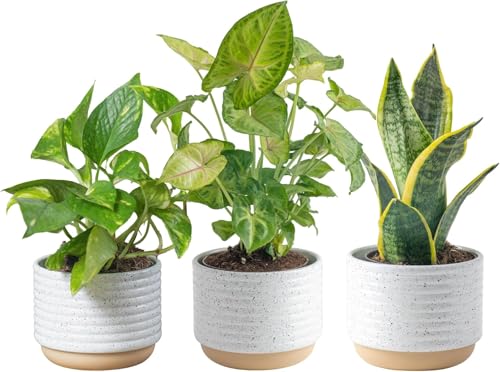In the 1970s 116000 hectares [448 square miles] of East Asian rice paddies were afflicted by grassy stunt virus, which destroyed the food crop. Scientists knew that they were facing a potential disaster, so they began to research to find a rice strain immune to the virus. Eventually they found one rice species, Oryza nivara, that was immune, and they began a long endeavour to cross the various strains of cultivated rice with Oryza. Eventually, they succeeded and the world's rice crop was saved. This shows the importance of identifying and preserving the wild relatives of food plants.
The problem at the moment is that the world gets eighty per cent of its calories from just twelve crops, and these have been selectively bred to such a degree that the gene pool has seriously narrowed. Over-reliance on a narrow gene pool is very dangerous,for if a major virus wipes out one of these twelve, mass starvation would result. Here is where wild relatives become important. Out there in nature, quite often in isolated places, live species with unique genetic signatures,maybe possessing immunity to dangerous plant diseases or to the kind of conditions that we will increasingly face with global warming. Unlike the cultivated varieties, which have been grown in the narrow context of the laboratory and the farm, wild relatives have evolved to meet a wide range of conditions and have thus developed genetic mutations that may be useful to growers. Science is driven now by an urgent need to identify and genetically sequence these plants.
Take the case of the carrot.Many people do not realise that the orange carrot is just one group of varieties and that there are white, red, black, purple and yellow carrots. But this is without taking into account that there are several carrot species, each of which has some genetic variation in its genome. Scientists realised that with global warming, impending water shortages and the increasing salinification of certain lands, carrot crops may well be under threat, so they searched for the wild relatives and found several species that are resistant to water shortage and saline conditions. Seeds were collected and then the next stage of scientific work began .
The Millennium Seed Bank [MSB] was working with scientists from Pakistan and Bangla Desh, countries likely to be afflicted by destruction of carrot crops. Together they worked to map the location of these desirable species and then the MSB sequenced the entire carrot genome to identify the genes that made for resistance to drought and salinity. They are now in the stage of propagating the seeds and cross-breeding them with other varieties. The resulting carrots were also tested for palatability, important in a food crop. A database was then developed and made available to scientists. This pre-testing is prior to the seeds being returned to Bangla Desh and Pakistan for testing in the field, which allows scientists to ascertain whether there are any unforeseen problems.
The seedbank contains 2.2 billion seeds from 38000 species received from 190 countries. But despite these impressive numbers there is still work to do, especially with food crops, which have yet to be fully mapped and sequenced.









 Women of the Gospelson 10/11/2025
Women of the Gospelson 10/11/2025
 Religious Gardenson 08/25/2025
Religious Gardenson 08/25/2025
 Doctor of the Church: John Henry Newmanon 08/03/2025
Doctor of the Church: John Henry Newmanon 08/03/2025
 Restoring the Palm Houseon 07/16/2025
Restoring the Palm Houseon 07/16/2025




Comments
We do not eat potato skins other than those on potatoes, so I cannot provide an answer to that question.
Thank you for your comment below, on Jan. 26, 2024, in answer to my previous, same-day observation and question.
You and fellow eastern-ponders make scrumptious choices from the 12-edibles list.
Unitedstatesian 20th-century fare presented potato skins as kid, young-adult and grown-up sides and snacks.
Sometime this century I stopped hearing about and seeing them. Grocery-store potatoes uniformly tend towards potato-skin sides and snacks unfriendly in their thin skins to baked or fried, buttered or filled potato skins.
Would British Isles-er potato skins be similarly thin-skinned?
Wheat and barley, potatoes and rice.
Thank you for your answer March 16, 2019, to my previous, same-day question!
Your comment identifies the 12 edibles consumed by 80-plus percent of world populations.
Which of "wheat, barley oats, rice, millet ,sorghum, casava, potatoes cabbages, onions, leeks and peas" most likely would you and other eastern-ponders consume?
I don't know all of them, but here are some: wheat,barley oats, rice, millet ,sorghum, casava,potatoes cabbages, onions.leeks and peas.
I am unsure about patenting.
frankbeswick, Thank you for the back- and front-stories and products.
What are the 12 edibles that 80-plus percent of the world's peoples consume?
Does the Millennium Seed Bank patent the work that is being done?
There's a controversy in Hawaii, where taro once existed in 300 forms recognizable to native Hawaiians. The work by research scientists is patented, so tradition-minded Hawaiians no longer can use the taro that is being sequenced, researched and cross-bred.
BSG
The 50p wouldn't be available in circulation now as anyone who has one tends to sell it or keep it as a collector's item.
Smaller tomatoes pack the flavour into a smaller space, so they are more flavoursome than large ones, which is why Maureen likes me to grow cherry tomatoes.
Agreed.
This is an interesting article as I never imagined the planning and possible danger that goes into harvesting seeds and new plants. Also, I think I must have that botanical illustrations book. What a beauty!
I agree with BSG about the tomatoes we now buy. In fact I seldom buy at stores and depend on growing my own - or buying local if I can find them. Organic store bought usually are not fresh because no one wants to pay the extra money for "organic" so stores are forced to keep the old stuff out until it sells or rots.